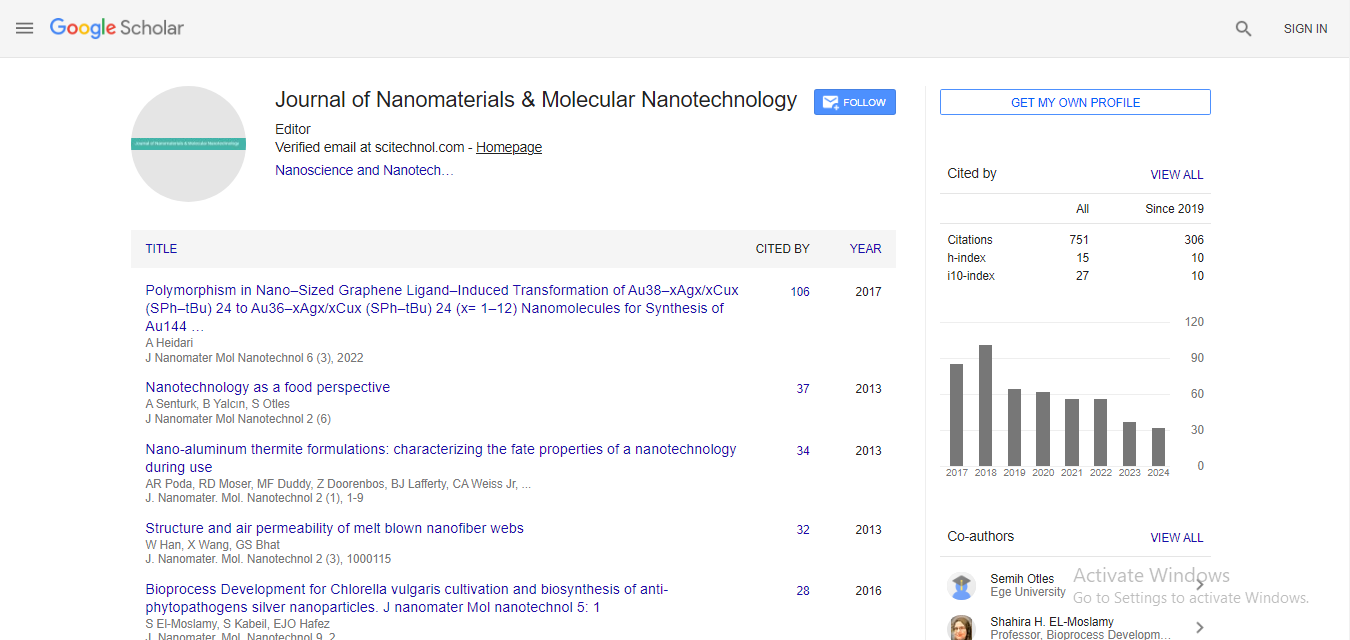The effect of Surface Nano-Crystallization on Cellテδ「テやぎテや徇aterials Interactions
Sara Olumi
Islamic Azad University, Iran
: J Nanomater Mol Nanotechnol
Abstract
Nickel-titanium (Ni-Ti) as a shape memory alloy is a great interest in medical applications such as implants due to its excellent superplasticity properties,... [1]. Despite the significant advantages of Ni-Ti alloy, it usually releases nickel ions after inserted inside the body, resulting in some problems including allergy and necrosis [2]. In order to get over this problem, researchers came up various surface modification techniques with the aim of improving the corrosion resistance and biological behavior of Ni-Ti alloy [3]. Surface modification of Ni-Ti alloy can substantially decrease the release of nickel ions from the surface of Ni-Ti alloy, improving its biocompatibility [4]. Nanostructured materials with their small grain size and high volume fraction of grain boundaries can significantly change the physical, chemical and mechanical charcteristics of the surface in comparison with the microstructured materials [5]. In our initial study, we successfully build the surface of NiTi alloy nanostructured (grain sized 50nm) by shot peening process. We further measured the contact angle and Finally we studied the Biological behavior of the microstructured and nanostructured NiTi by fibroblast cells.Webb et al. [6] demonstrated that cell attachment and spreading on the implant surface were improved by increasing the surface hydrophilicity .Result obviously confirm the expectation in Fig1 and Tabel1.
Biography
E-mail: olumi.sara1@gmail.com
 Spanish
Spanish  Chinese
Chinese  Russian
Russian  German
German  French
French  Japanese
Japanese  Portuguese
Portuguese  Hindi
Hindi 



